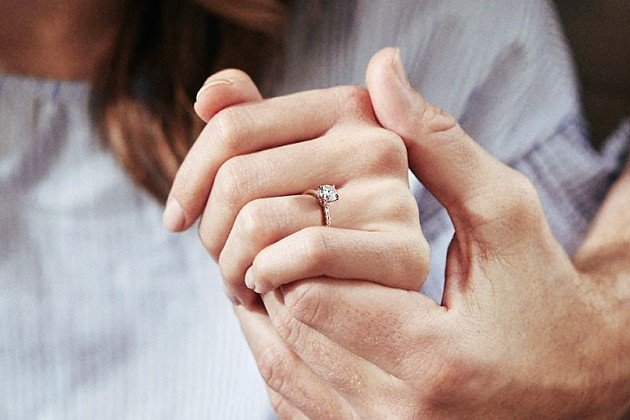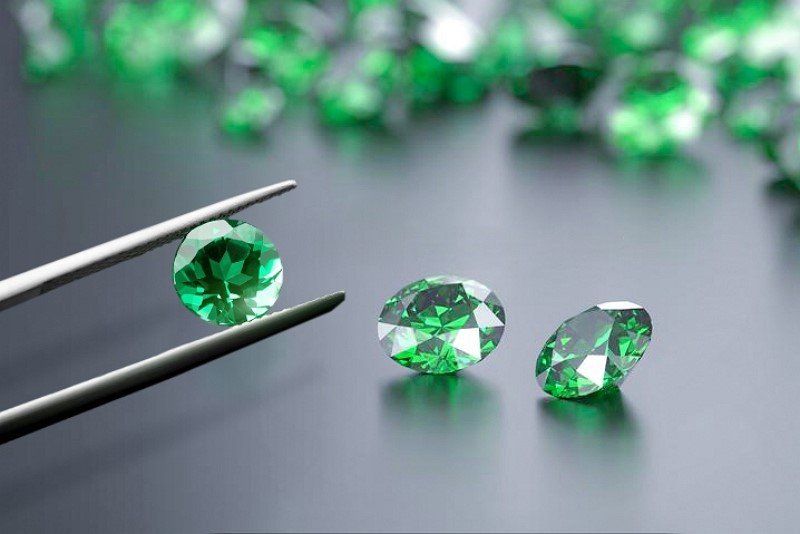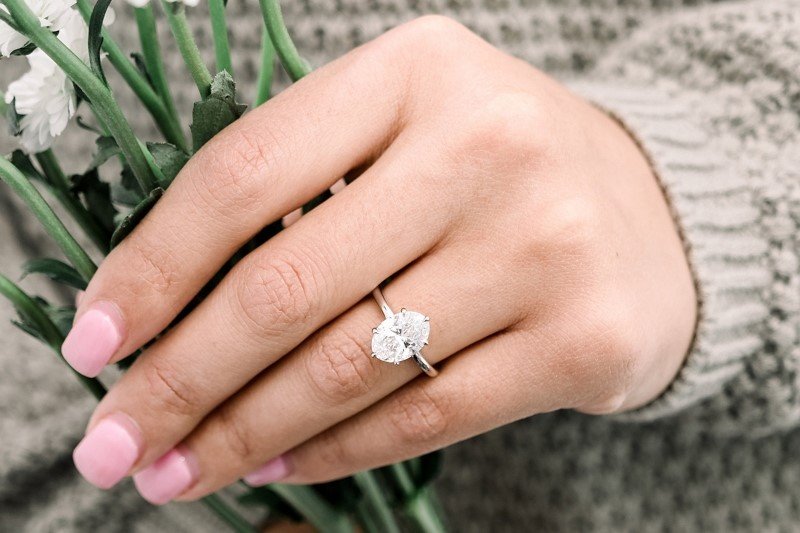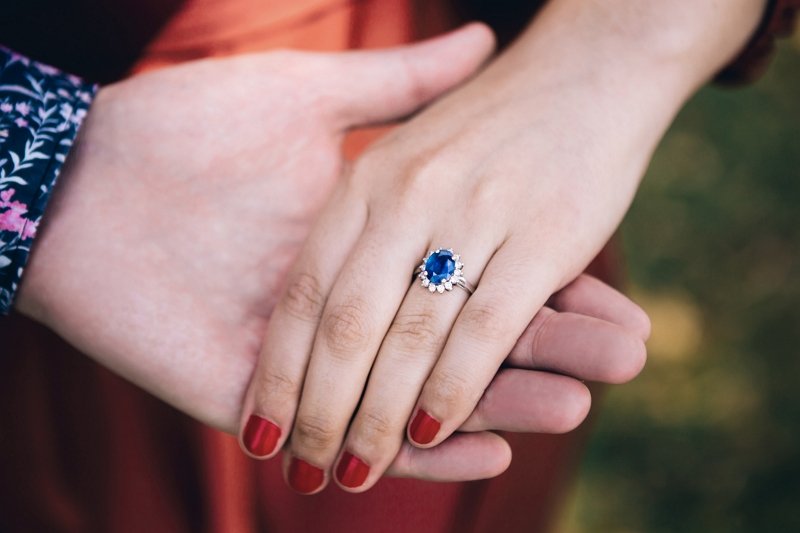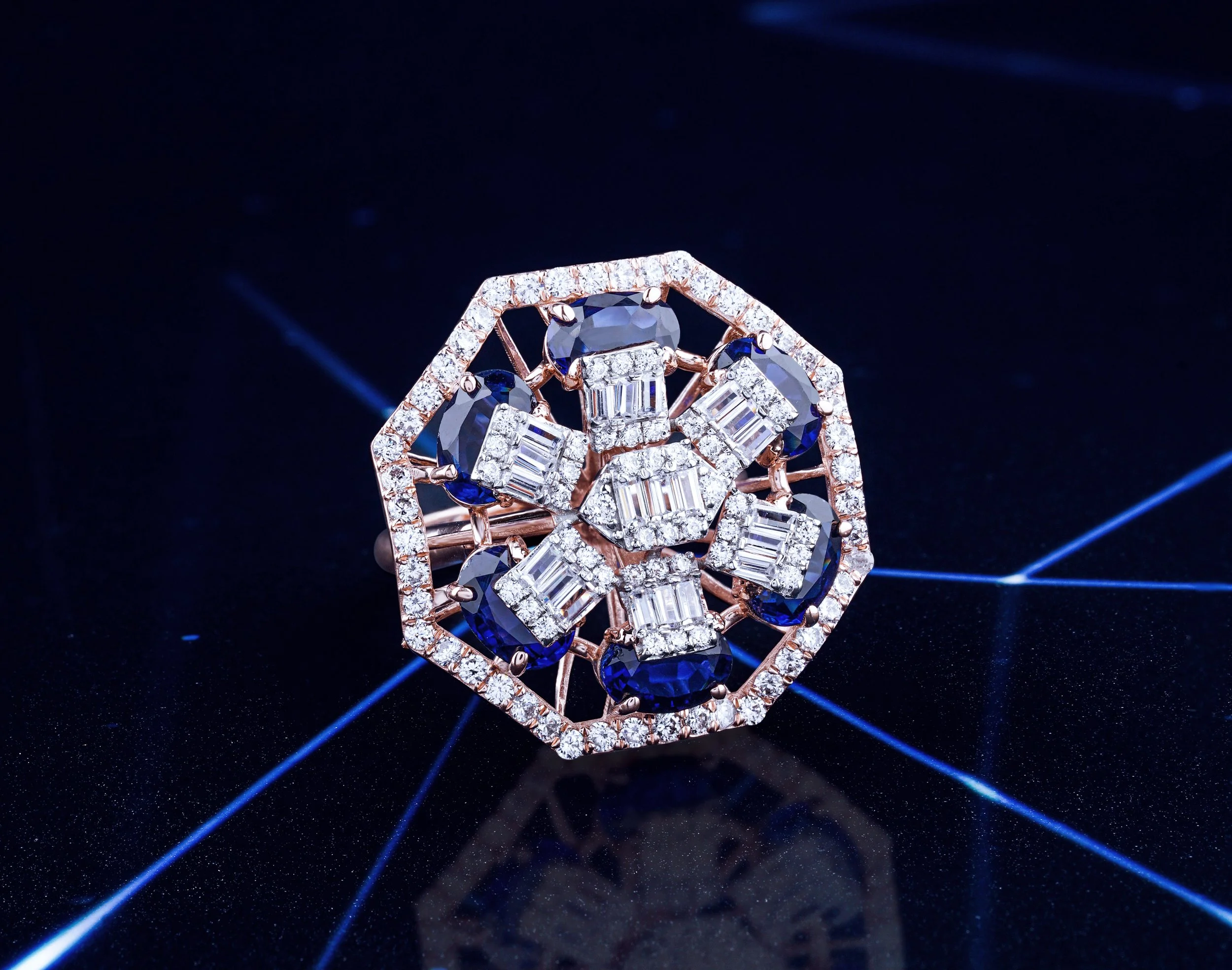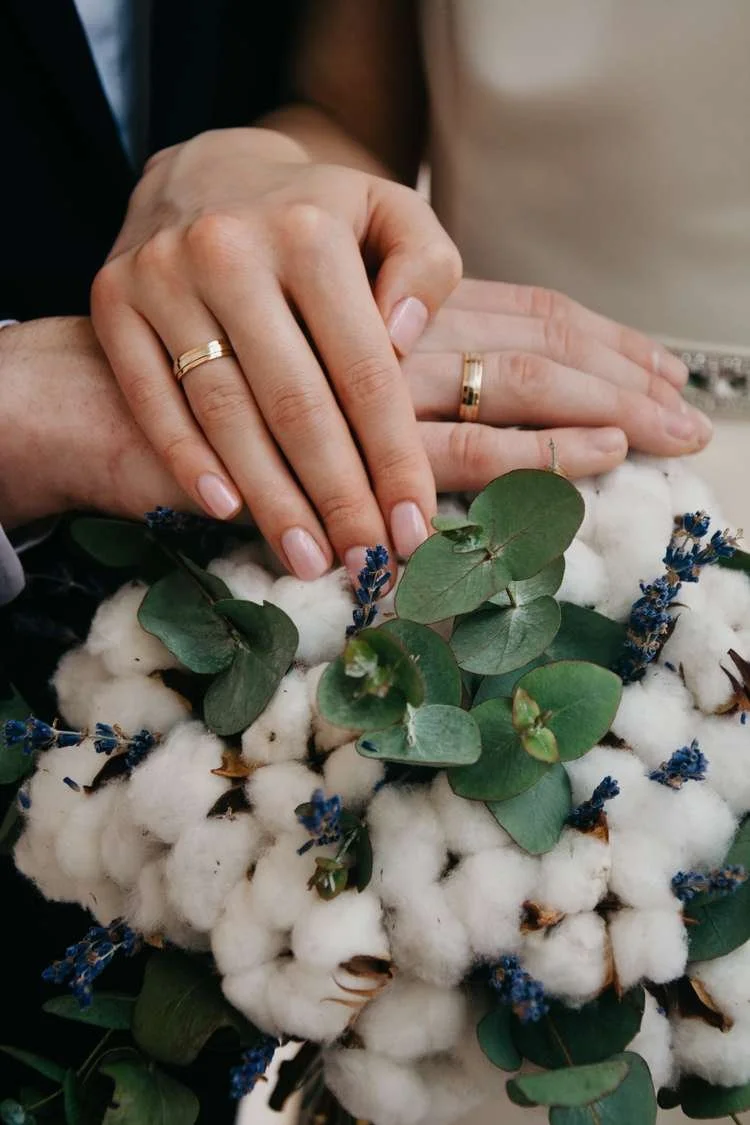How Carbon in Hair Can Be Turned into an Engagement Diamond Ring
In recent years, the global diamond trade has taken a turn with the arrival and rise in the popularity of lab-grown diamonds. So did the jewelry and wedding industries and the funeral industry. Lab-grown diamonds can be made from carbon hair, ashes, or any carbon sources available in nature. More and more soon-to-be-married couples in the USA are now looking into unique types of engagement rings for their big day, like a a diamond ring made from carbon hair.
Lab-grown diamonds made from carbon hair: a unique process
In recent years, the output of diamonds produced in the laboratory has surged. In 2020 alone, 6-7 million carats were made, but it is still small compared to diamond mining. Diamond mining reached a peak of 152 million carats in 2017 and is about 111 million carats at present. But laboratory-grown diamonds are increasingly seen as a sustainable choice for young consumers concerned about prices and the planet.
Lab-grown diamonds: what are they?
Lab-grown diamonds, also known as laboratory-produced or man-made diamonds, are chemically, optically, and physically the same as mined diamonds. But lab-grown diamonds are more ethical, environmentally friendly, and affordable than naturally mined diamonds.
The mined diamond industry has been plagued by labor abuse and a lack of transparency. The development of the lab-grown diamond industry provides customers with cleaner diamond options. If produced under the best conditions, lab-grown diamonds may have a lower carbon footprint than mined diamonds. Still, other factors need to be considered, such as the environmental, social, and economic impacts. Critics worry that brands and consumers are too receptive to lab-grown diamonds as a sustainable solution without carefully examining their full impact and potential downsides, ignoring the progress in cleaning up the diamond mining industry.
Lab-grown diamonds technology: how are they made?
Carbon must first be extracted from an original source, whether it's the carbon from hair, cremated ashes, or other types of organic materials to grow diamonds. Each company has its specific requirements. When it comes to the required amount of organic materials, you must send them. The exact chemical composition of the organic sample is analyzed and then exposed to extreme heat to extract pure carbon from the sample.
This pure carbon is used to make the diamond core base, then placed in the HPHT (high pressure and high temperature) machine. The machine creates an environment that simulates the elements that produce diamonds deep in the Earth's mantle, under extreme temperatures (more than 3632°F) and extreme pressure (more than 60,000 Atmospheres).
After a few weeks, this diamond growing base has grown into a diamond. A few more weeks inside the HPHT machine, people can make the gemstone that achieves the desired color and weight (carat).
Sunny Eden™ is a Californian-based lab-grown diamond from hair manufacturer. Recently founded in Burbank, it is dedicated to making stunning diamond engagement rings and wedding bands for future married couples. It offers a range of fancy colors such as yellow, green, sky blue, pink, colorless, and various diamond cuts. Sunny Eden™ also provides the possibility to custom-design your diamonds and jewelry settings.
A personalized diamond ring for your wedding
Lab-grown diamonds are real, and they are a fantastic new alternative to traditional natural diamond engagement rings. They are also ethically sourced, eco-friendlier, and far more affordable than their mined counterparts. You've likely heard the word "synthetic" thrown around, which can make you hesitate. However, the only difference between lab-grown and natural diamonds is their respective origins. Otherwise, laboratory-grown diamonds are chemically, physically, and optically the same as diamonds mined from the Earth.
Turn your hair into a unique diamond ring
The world is changing day after day, and you want to change and evolve with it. You can start by making responsible choices of the products you want to buy. Diamond engagement rings produced in the laboratory and made from hair can be customized and affordable to couples. More and more couples are now choosing lab-grown diamonds. Turning your future spouse’s hair into a diamond is considered unique, meaningful, and special in many ways.
Lab-grown diamonds made from carbon hair cost and characteristics
The engagement ring market is quite ripe with the rise of lab-grown diamonds from carbon hair. To turn your hair into a sparkling diamond engagement ring for your big day, you will need to provide at least 10g of hair. Lab-grown diamond manufacturing companies such as Sunny Eden™ offer diamond prices starting from the US $2000 with a production time of about ten months. The price includes logistics, jewelry settings, and engraving, etc. The production time also depends on the characteristics chosen for the lab-grown diamond, like color, weight (carat), and cut.
Natural diamonds vs. Lab-grown diamonds components
The difference between natural and lab-made diamonds is invisible to the naked eye. Natural diamonds contain traces of nitrogen, while laboratory-grown diamonds do not contain nitrogen. This is one of the signs gemologists use to determine whether diamonds are natural or produced in laboratories.
Natural diamonds are formed over millions of years under intense pressure below the Earth's mantle and mined, cut, and polished. Lab-grown diamonds are produced in a similar lab-controlled environment. The process used to make lab-grown diamonds has dramatically shortened the growth time, from millions of years to a few months. Finally, lab-grown diamonds are cut and polished.
Natural Diamonds Components and Chemical Structure
The diamond's special chemical composition and crystal structure make it a one-of-a-kind gem in the mineral family. Diamonds are the only gemstones made of a single element: they usually contain about 99.95% carbon. Another 0.05% may contain one or more trace elements, which are atoms that do not belong to the basic chemical composition of diamonds. Certain trace elements can affect their color or crystal shape. Natural diamonds are classified according to the type and grade of their internal impurities.
Type Ia diamonds - most natural diamonds belong to this category and contain up to 0.3% nitrogen.
Type Ib diamonds - very rare in nature (~ 0.1%), but almost all lab-grown diamonds belong to this type. They contain up to 500 ppm nitrogen.
Type IIA diamonds - seldom seen in nature. These diamonds contain very little nitrogen and are difficult to detect by ordinary infrared or ultraviolet absorption measurements.
Type IIB Diamond - extremely rare to be found in nature. The nitrogen concentration of these crystals is very low (even lower than type IIA), so the crystals are p-type semiconductors (due to uncompensated B receptor impurities).
Lab-grown diamonds components and chemical structure
Lab-grown diamonds have been produced by a technological process called High-Pressure High-Temperature synthesis (HPHT) since the early 1950s. This is an attempt to simulate the formation and conditions of natural diamonds in the depths of the Earth. Man-made diamonds are made of the same material as natural diamonds: pure carbon and crystallized in an isotropic 3D Form.
The cost differences between lab-grown diamonds and mined diamonds
A lab-grown diamond and a natural diamond look almost the same. However, the prices and values can be very different. Diamonds produced in the laboratory are usually about 30% cheaper than natural diamonds of the same size and quality. The process of lab-grown diamonds reproduces the natural diamond formation in a lab, making it impossible for the human eye to recognize the difference between man-made diamonds and natural mined diamonds. Diamonds produced in the laboratory have also been certified and graded to meet the same standards as natural diamonds.
Lab-grown diamonds cost explained
The process of producing diamonds in laboratories does not come cheap. It needs special machines, diamond planting experts, gemologists, diamond cutting specialists, polishing specialists, etc. Unlike gems of cubic zirconia or moissanite, lab-grown diamonds require high pressure and high temperature (HPHT) or chemical vapor deposition (CVD) processes. Multiplying carbon atoms and compressing them into diamonds needs expertise, time, and high technology. That's why most lab-grown diamond manufacturers' price starts from US$1500 for 0.25 carats, depending on the manufacturing method, diamond weight (carats), and color selected.
Mined diamonds cost explained
Diamonds are expensive, and we all know it. Diamonds are even more expensive than gold or platinum. But the question is, why are diamonds so costly? A good quality diamond costs on the average US $5000 per carat. That's US $777,587 an ounce. De Beers, which has monopolized the diamond mining industry for decades, now mines less than 50% of diamonds and no longer controls diamond prices. Today, the retail markup of diamonds is usually only between 5 and 10%. However, natural diamonds are still expensive for the following reasons:
1. Mining diamonds costs are high
About half of the 40 existing diamond-hard rock mines mining kimberlite are underground, and the other half have underground mining plans. For example, the mining methods currently implemented in hard-rock diamond mines include two categories: open-pit mining and underground mining. Open-pit mining accounts for most carat production, but underground mining plays an increasingly important role. Underground mining increases complexity and operating costs, usually more than open-pit mining costs, while productivity is significantly reduced. Although the typical operating cost of open-pit mining may range from $30-65 / ton to $150 / ton of the underground backfilling method, some recent diamond projects are higher.
The additional cost of operating a mine: all workers need air transportation, accommodation, and meals. Many mines have a life span of ten or twenty years. There is a long list of mines worldwide that are not profitable anymore.
2. Diamond rough yield is low
The yield of rough diamonds is about 30%. One carat of the rough diamond can cut a third of a carat polished stone. The yield depends on whether the rough can be makeable rough. That means whether the rough can be polished into a stone. A sawable rough will be sawn in half before polishing and near gem or cleavage rough needs to be cut into two or more pieces before polishing. Finally, one industrial-grade diamond rough will be cut into tools or crushed into powder. Rare octahedral crystals can be cut into two Princess shapes which will obtain up to 70% of the rough (therefore this shape is cheaper than a round brilliant). But most of the carats of gem-quality diamonds mined each year eventually turn into dust and are polished away during the cutting process.
3. Financing inventory adds to the cost of diamonds
The miners need a lot of money to build a mine. Cutters need millions of dollars to buy rough to keep their cutting plants running. Jewelers need to buy diamonds and gold to make jewelry. Retailers need to keep inventory in boxes waiting for people to buy them (usually requiring suppliers to provide consigned goods). Every step of the diamond production line requires huge funds. Banks did not queue up to lend to diamond companies because they did not know enough about diamonds and evaluated the collateral. Financing in the diamond industry is hard, and it is becoming more and more costly every day. But the cost of raw materials in the diamond industry is higher than that in any other industry. The interest adds up too.
4. Sorting and cutting diamonds Require real expertise
Diamond roughs are expensive, and the yield is very low. The classification and evaluation of each rough require some serious expertise. Experts must carefully analyze each batch of rough to assess its potential. The cutter must decide how to extract the maximum value from each rough. Should you cut a large round that costs more per carat but wastes rougher? Two smaller pears, lower price, but less waste rough? What gives you the best return?
Once a decision is made, the rough part can be laser cut, processed and polished. (this requires the use of diamond powder: there is nothing else to cut diamonds). Cutting experts may make mistakes: sometimes things don't go according to plan, and expensive rough diamonds break or crack. These experts spend hours (or even weeks) on each diamond which also increases costs.
5. The grade determines diamonds prices
Now, expensive diamond stocks need to be graded by GIA. This increases the cost of a carat of diamonds by $120 and a few weeks of financing. But more importantly, the grading report determines the price of diamonds. Even if you pay more for financing, roughing, sorting, and cutting, you are competing with all the people in the world who have G-Color, VS2 clarity, and high-quality cutting-grade diamonds.
Grading enables diamond professionals to easily and accurately communicate about diamond quality. But they also make the industry extremely competitive. Dealers and retailers rarely raise prices for diamonds. There are fewer markups in today's system than at any time in history.
6. Natural diamond demands are high
Today, De Beers accounts for only half of the global diamond production, and the company no longer finances consumer marketing that helps drive the diamond demand. A whole new generation of consumers did not see any imitation diamond advertising in the growth process. However, people all over the world still want to buy diamonds.
Although most diamonds were once sold mainly in the United States and Europe, in recent years, fast-developing markets such as China and India have known a rapidly growing demand. As these markets become richer, the demand for diamonds will continue to increase.
Despite the growth in sales, there is a lot of competition at the different stages of the distribution channel. The diamond industry itself is shrinking and integrating the following: a mistake or a loss of financing may mean the collapse of a company. Most diamonds are now shipped directly from the cutting expert to retailers. So there are fewer survivors: fewer retailers, manufacturers, diamond wholesalers, and rough dealers. At the end of the mine's production life, diamond production declines. Diamonds are expensive because they cost a lot to enter the market, there's a limited supply of high-quality gems, and people worldwide want to buy them. It's just supply and demand.











